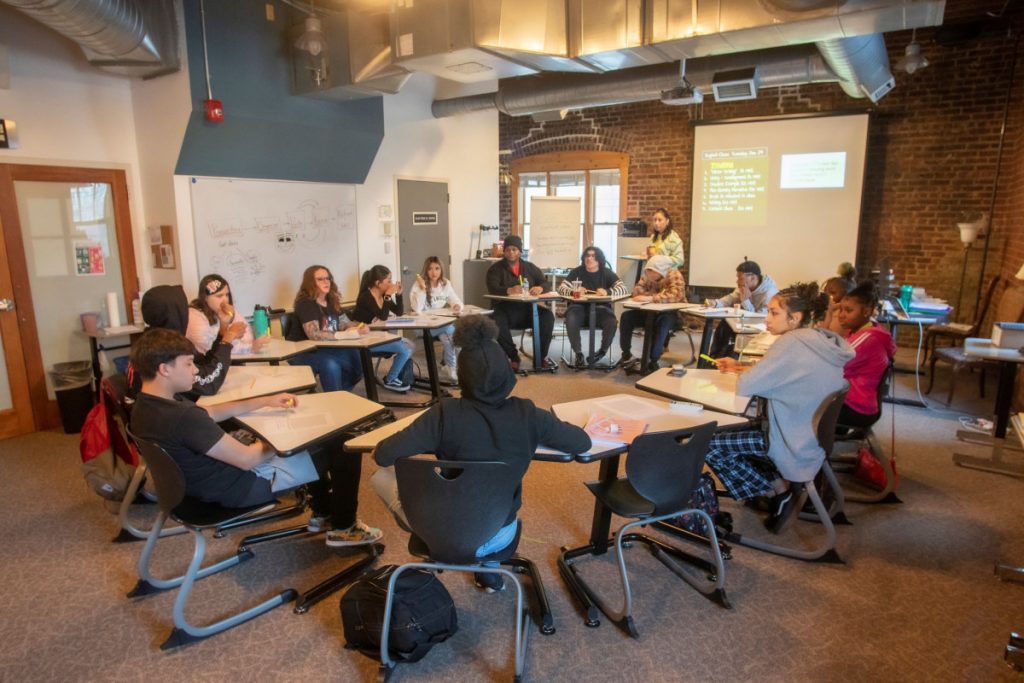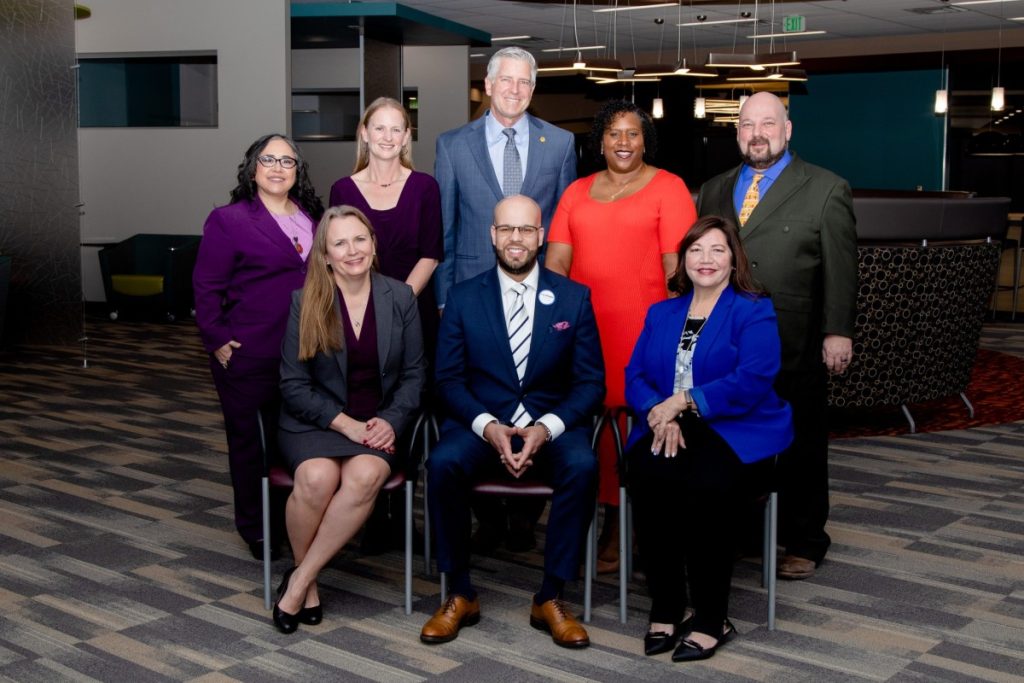Editor’s note: This is the may contribution from Boardhawk columnist Aaron Massey
Each May, educators across the country are feeling three ways:
- Teachers are dope (Happy Teacher Appreciation Week).
- I’m so happy testing is done.
- I CAN NOT WAIT FOR THE END OF THE SCHOOL YEAR. This also happens to be the time of the year when we reflect on all the things that could have been better. Practical things that could have been done to get better results, to prevent that issue from popping up, and to increase student engagement.
Instead of harping on the past, I want to push us to take these lessons and think through how we can improve next year. As such, I’m going to suggest three ideas to improve outcomes for schools, the problem we are solving for, associated myths, associated facts, the theory of change, the change idea, and the level of spice I think it might contain , using a 🌶️ rating. (If you’re getting the feeling that this is a recently conferred doctorate thirstily using his degree: Yup)
Key:
🌶️: it’s a basic level of spice because change management is hard but kids still deserve it.
🌶️🌶️: it’s a little more spicy because you see a logistical issue with how to make it work but kids still deserve it.
🌶️🌶️🌶️: change management is hard, logistics are hard, and I don’t know if I can pull it off but kids still deserve it.
Problem 1: Black and Brown student results in math and reading are lower than their White counterparts.
Myth: Black and Brown students don’t care about achievement in academics.
Facts: Black and Brown children have other systems of learning outside of the school building like barbershops/salons, the YMCA, the neighborhood store around the corner, community organizations, and literally just playing outside that are more aligned with their learning processes. In these systems, they learn about math and reading as well. Just in different ways.
Theoretical Change: As opposed to restricting curriculum, doing more test prep, or sticking with the same old strategies, let’s focus more on learning about the unique talents and abilities of students and bring that into the school building. From their talents and abilities, we can begin to help Black and Brown students see themselves in schools. That, in turn, will invest them in the classroom. Students don’t often reject learning; they reject the packaging of learning.
Change Idea: In your summer onboarding of all new and returning teachers, do a community culture walk. This is an organized walk, usually with the principal guiding it, that exposes teachers to the community in which students are operating. Complete with guided questions that you could gather from students now, teachers will begin to understand the different strengths and stakeholders that surround the school. With that knowledge, they will be able to craft lessons that reflect back to students the value of the other systems in which they operate. When you show you value who a person is, they usually will return that by showing they value you.
Who Does What: Central Office: Mandate it for all schools. Rarely-Considered Community Liaisons: Plan it. Principal: Ask questions and then approve it. Teachers: Gather questions from students now.
Spice Level: 🌶️
Problem 2: There is an ongoing mental health crisis while safety concerns still loom. I can tell you right now that the spice level on this is 🌶️🌶️🌶️ because safety is important. Because mental health is important. And because schools have not been able to address either of these concerns. But there is a way!
Myth: If I try to address the safety of students, I have to suspend or otherwise exclude children from school so the others can learn.
Myth 2: If I try to address mental health, there are no ways of addressing misbehavior that corrects student behavior.
Another Myth (DJ Khaled Voice): Addressing the mental health needs of students is mutually exclusive from keeping them safe.
Facts: the causes of student mental health struggles are also often the reasons why they act unsafely. And when I say students, I mean all students. That student that disrupts the class usually needs additional academic support. That student that threatens the school with violence usually is being bullied in some way. That student that keeps his/her head down during the lesson, usually has more pressing issues that need to be addressed. The more we keep treating these things as mutually exclusive, the more children suffer.
Theoretical Change: There is no such thing as a bad child or a good child. There are children whose needs are met and children whose needs are not met. When your needs are not met, what do you do? How do you act when you are hungry? What do you do when you are backed into a corner? How effective is your presentation when you don’t get enough sleep? Children are still humans like us; they just have different problems.
Change Idea: At the beginning of the year, have an adult facilitate a reverse fishbowl. This is a structure where students sit on the inside and answer a host of questions (that can be written by students right now) in a discussion format among themselves. The adults sit and listen on the outside and take notes. After the initial discussion, adults go into a separate space and discuss what they heard. The adults then come back and share out what they heard and students get to approve the findings. If what was reflected back to the students was not correct, adults need to go back and re-discuss. In order to keep kids safe and mentally healthy, you have to know what they are going through, what they believe, and how they make sense of what they believe.
Who Does What: Central Office: Make space for this in your onboarding of teachers (and let me know if you need support). Principals: Lead this effort. You are the cultural leader in the building. Teachers: Take notes, seek clarity, and push colleagues. This is a new way of gathering information. I get that. Still worth it.
Spice Level: Please see above.
Problem 3: Parents want to be involved but aren’t. District leaders, school leaders, and teachers want parents to be involved but parents still aren’t. This gridlock has left two concerned entities distant from each other.
Myth: Parents aren’t interested in their child’s education.
Myth 2: District leaders, school leaders, and teachers believe there is no reason to involve parents in the school.
DJ Khaled: Parents are too busy because they are struggling so much to make ends meet.
Facts: Parents are busy making ends meet. But that doesn’t mean they are too busy for their child. In fact, parents have a lot of trust and hope in the school system. (I would argue too much trust and hope). Maybe the solution isn’t an hour-and-a-half meeting after school. Parents woke up and either got their child ready for school or needed to evaluate the child’s ability to get ready for school on their own (that’s still work). Then they went to work. Then the school scheduled parent-teacher conferences 30 minutes after that. Well yes, that’s a lot.
More facts: Central office staff, school leaders, and teachers want every ounce of support there is to offer including that of parents. We do respect that you know the very most about your child. We also know that children try on different personalities when given space to do so. The truth is that most teachers are scared to call home about anything good or bad. I’m not saying that’s a good thing (and a way to combat that is in Problem 1). I’m saying that I know it’s true.
Theoretical Change: Parents are deeply invested in their children’s education and need ways that they are more familiar to engage. But they also have traumas from their own education that sometimes makes it more difficult for them to engage. But there is always a way.
Two practical change ideas:
Change Idea 1: Schools, partner with organizations that already have the ear of parents in an authentic way.
Who Does What: Principals, this is on you as well. There is no one better to connect schools with organizations that are willing to support parents. This is what I call taking care of the “whole family.” If a principal walks into a barbershop and asks the shop owner if they could work together to provide free haircuts, you have at least 20 minutes to talk to a parent who is waiting for their child.
Change Idea 2: Make a list before school starts (but when you have your roster) of what ONE parent you will call each day. Word will get around that you call parents. No agenda. Ask them how their day is going, how they are experiencing the school, and what they care about the most.
Who Does What: Maybe add an extra 🌶️ here, but teachers: this one is on you. You are the most important factor determining if a student succeeds in the building. Parents are the single most important factor in a child’s life. Education needs you two to combine forces.
Spicy Level: 🌶️🌶️
Admittedly, I’m not suggesting these change ideas to be a silver bullet. Rather, I am suggesting that practicality, intentionality, and trying new things is always greater than continuously complaining.
Now get those first summer sangrias ready and prepare for a better next year.




